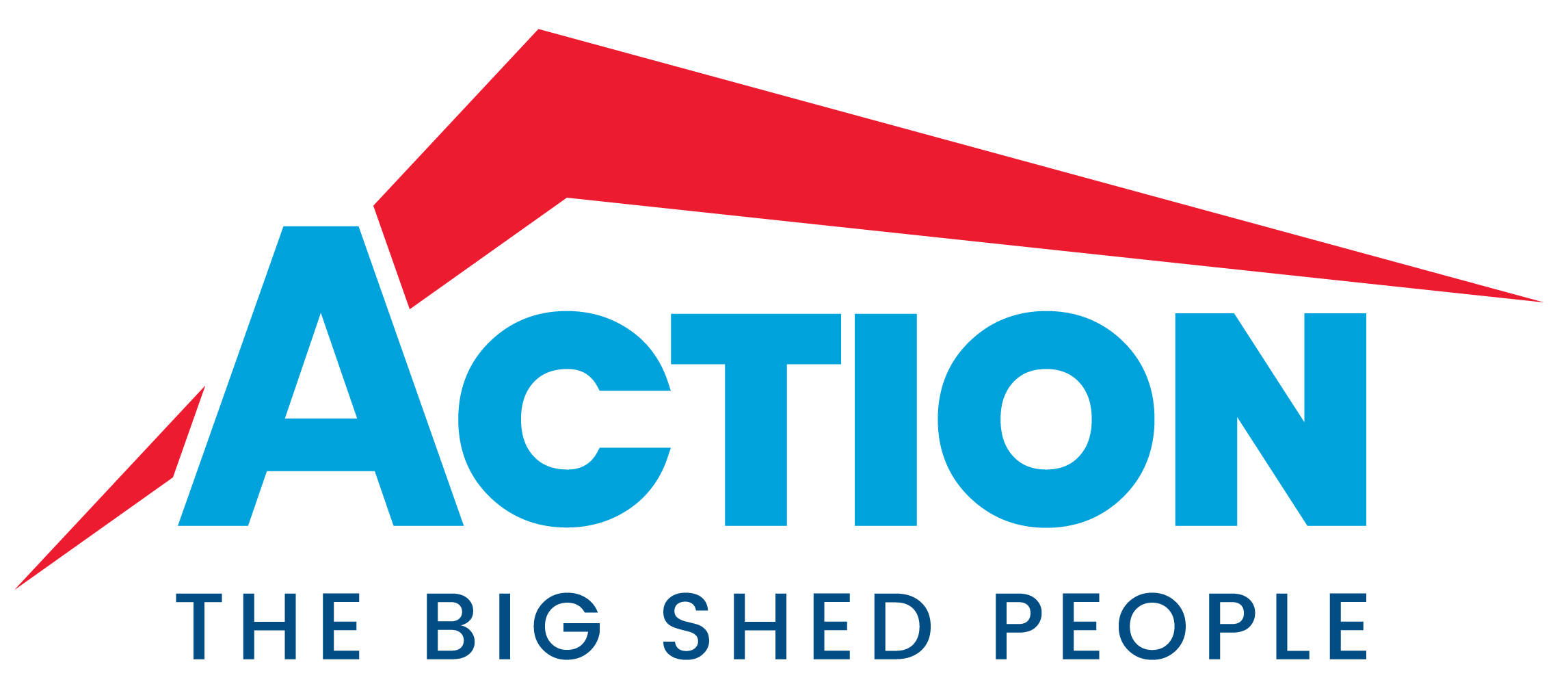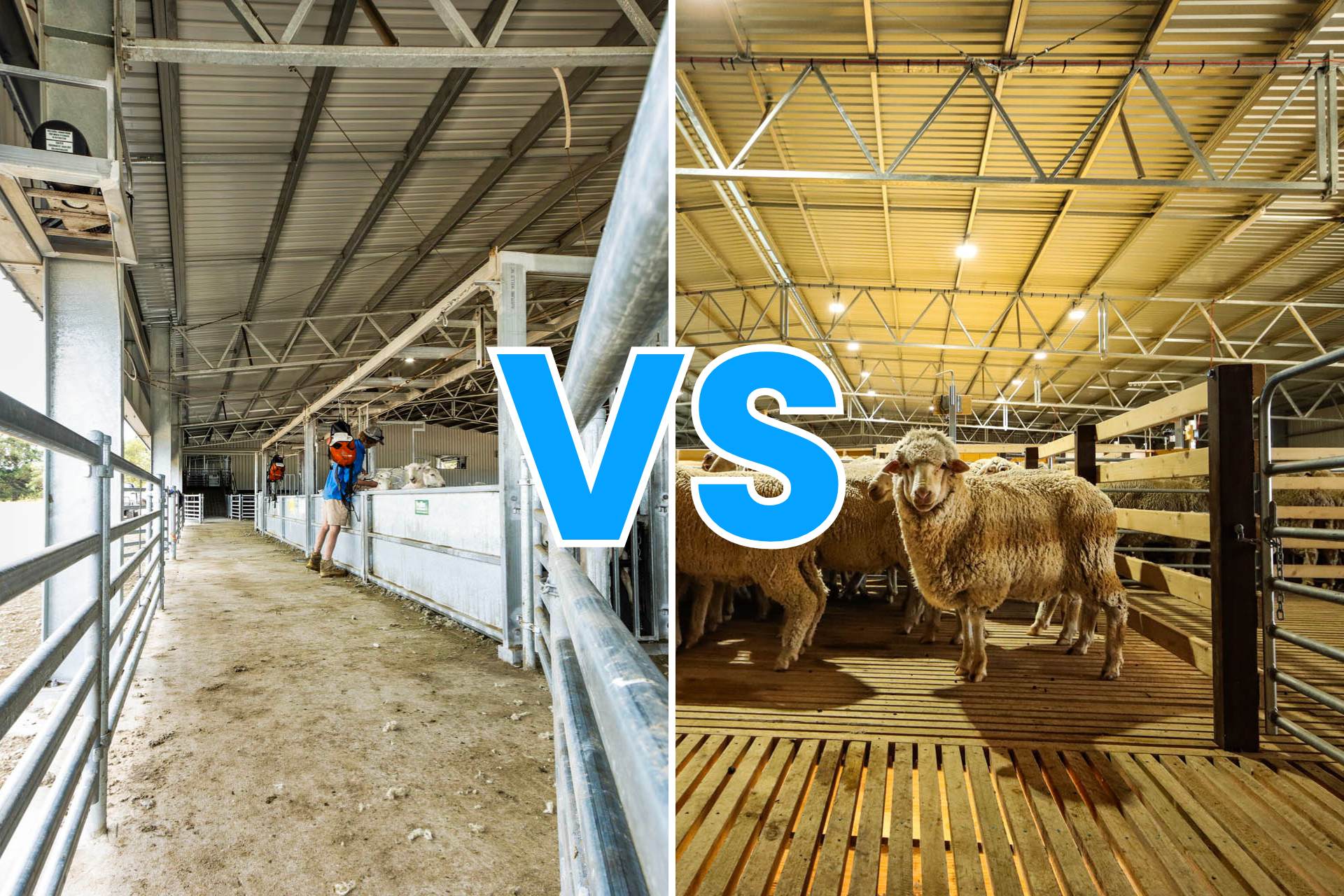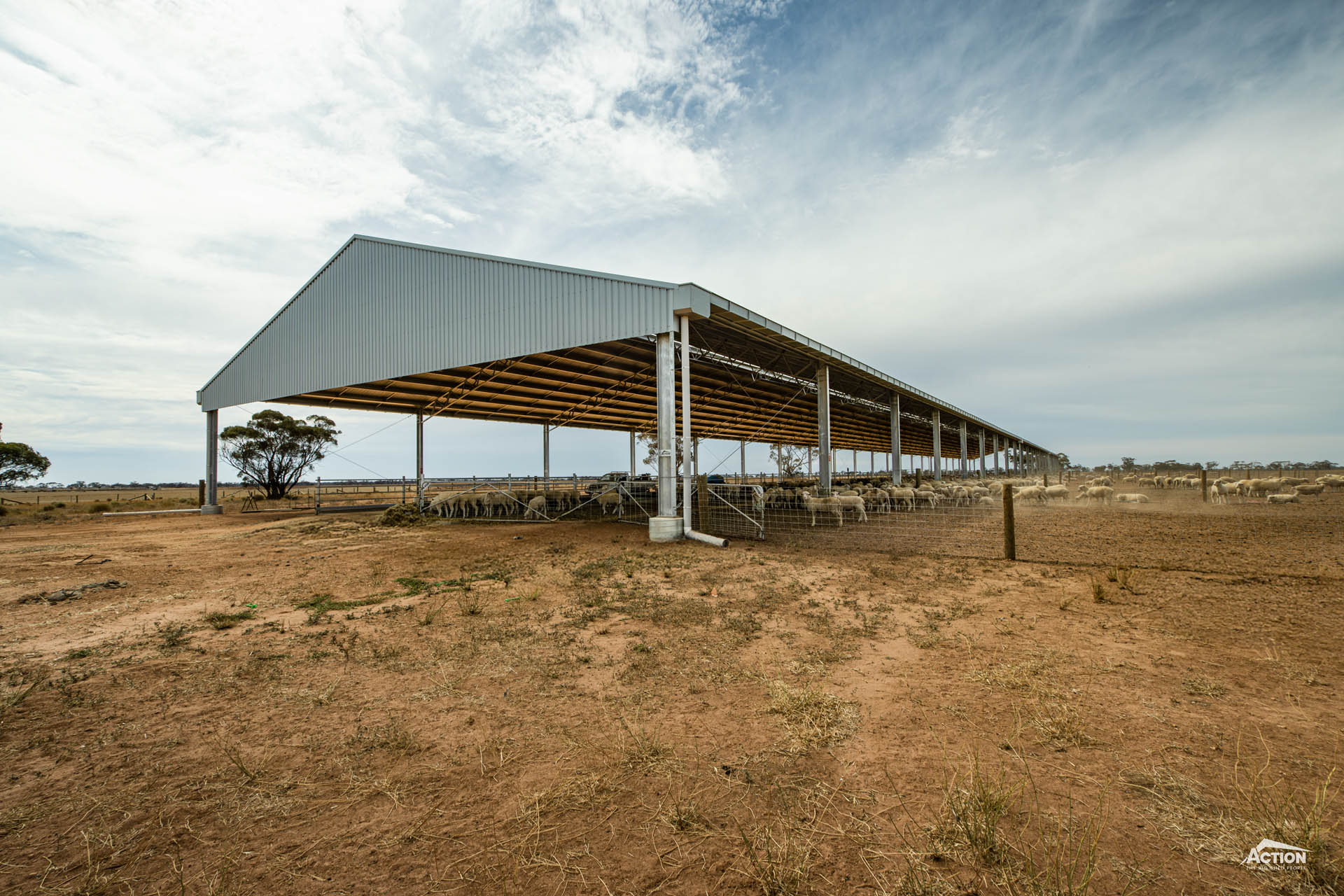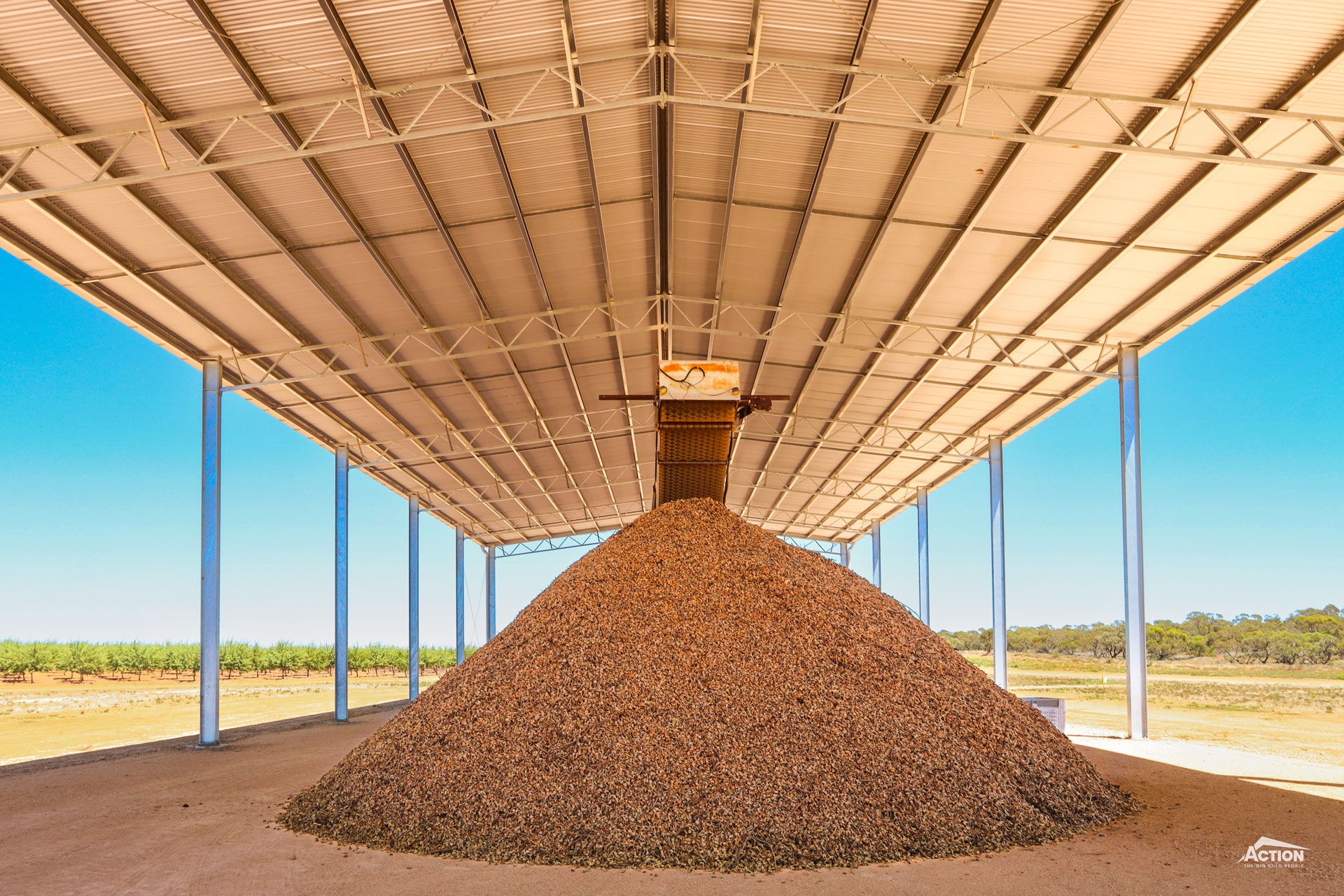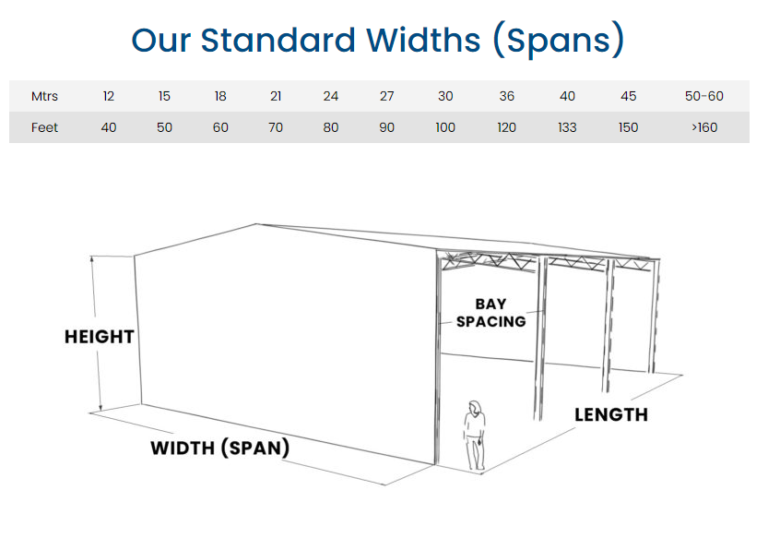Open bay sheds are the most popular farm shed design and for several good reasons.
That’s not to say the configuration doesn’t have disadvantages, though – it may not be the right fit for your requirements.
In this article, we discuss the good and the potentially not-so-good details of open bay sheds. We also provide some handy size ideas, price guides and plenty of project inspiration!
What Is An Open Bay Shed?
An open bay shed is also known as an “open-front shed” and is typically a three-sided configuration with one long side unclad.
This gives open access to each bay – hence the name.
What Are The Advantages?
There are four main advantages of choosing an open bay shed configuration: versatility, customisation options, price and effectiveness.
We discuss each of these in detail below.
1
Versatility & Value For Money
Firstly, open bay sheds are incredibly versatile.
Building an open bay shed guarantees a multi-use asset as the configuration works well for storing hay, machinery and commodities such as almond hulls. Or it could be used for general farm storage and calf sheds.
So, we recommend taking some extra time in the planning stages to address details like bay spacings, shed height and additional design features like canopies.
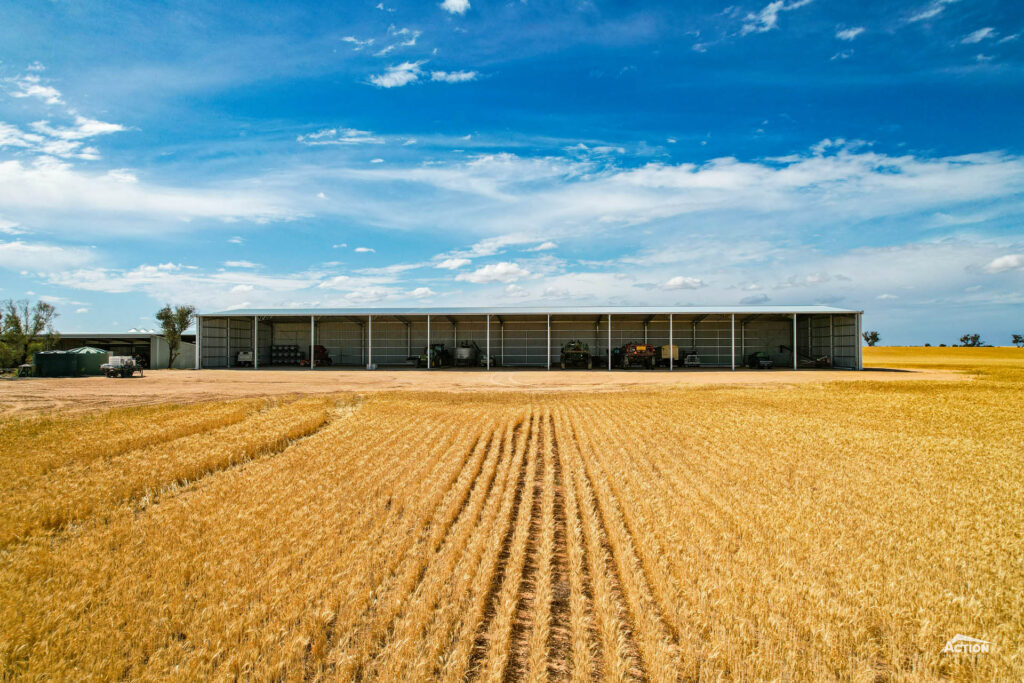
This can help ensure your shed can be used for a variety of purposes, which is a great way to future-proof your shed and to get the best value for money.
2
Cost-Efficient Design
As well as providing good value for money by being a versatile asset, open bay sheds are also one of the most cost-effective options available for storage sheds.
This is particularly the case when using standard size spans.
Popular standard size spans include 18 metres, 24 metres and 27 metres. The advantage of choosing a standard size span is that your shed moves quickly through the manufacturing process, reducing the production cost.
You can learn more about these here – What Are The Standard Spans For Farm Sheds?
A longer, narrower open-front configuration usually costs less than a wider and shorter design. And other details that make up a cost-effective design include popular bay spacings such as 8.5 metres and 9 metres.
3
Effective Storage
Thirdly, this is the recommended configuration for hay storage because it provides excellent weather protection, sufficient airflow and easy access – ticking all the boxes.
For the same reasons, open bay sheds are ideal for calf sheds.
4
Easily Customised
Finally, in addition to being versatile, cost-efficient and effective, an open bay shed is easily customised.
And there are number of ways you can do this:
- Cantilevered canopies as a cost-effective way to gain extra coverage
- Double bay openings for extra wide machinery access
- Concrete panels and slabs for fertiliser storage
- Sliding doors in the back wall or gable end for easy access
- Skylights to take advantage of the natural light
- Enclosing a bay or two to create a multi-purpose shed. For example, a machinery store shed and workshop area.
These options all further enhance the versatility and effectiveness of the design.
Now, with these points in mind, let’s look at some of the reasons why open bay sheds aren’t always the right choice.
Considering both the advantages and disadvantage will help you make an informed decision.
What Are The Disadvantages?
There are no real drawbacks to building open bay sheds – this is evidenced by the fact that we build hundreds of them every year!
It is more that they may not always be the best option – and there are other options available to utilise.
Here are some examples of when this might be the case.
1
Cost-Prohibitive For Wide Storage
As we mentioned above, there are so many ways that you can customise open bay sheds.
One of these is to create double-bay openings with a girder truss. This is a really handy option if you have a piece of wide machinery to store.
However, it is not the most cost-effective way to achieve a wide opening.
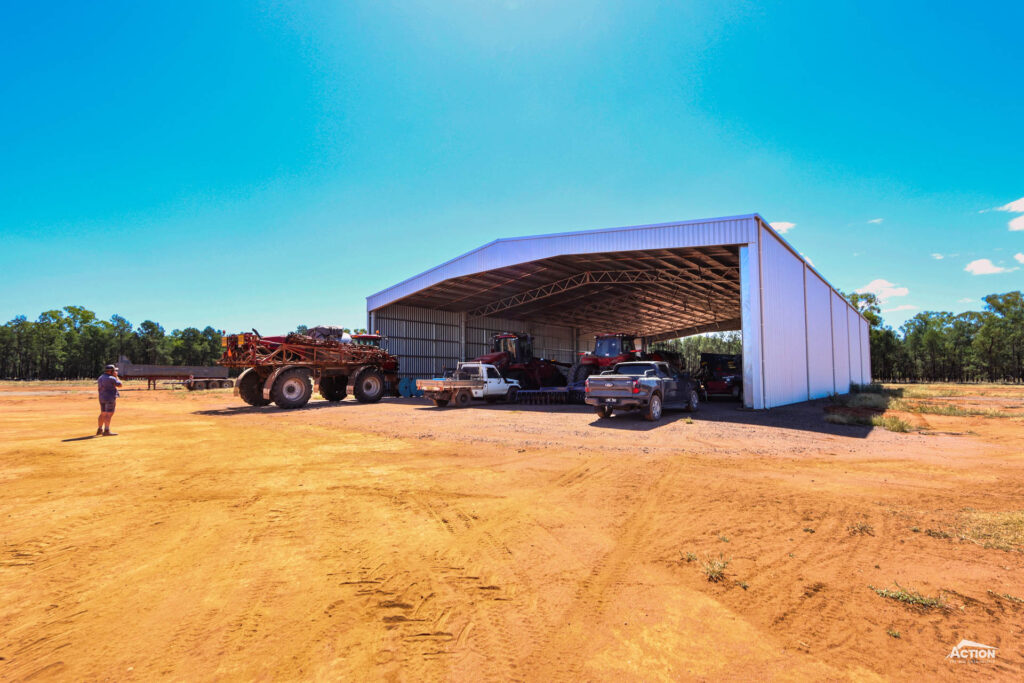
The most cost-effective way to store wide (and long!) machinery is to choose an open gable end or drive-through configuration. This typically provides much better value, particularly if you have a lot of large machinery to store
One way to get the best of both worlds though is to build an open bay shed with an open gable end. This provides access to the bays, and wide access at the gable end and is a popular option for hay sheds and machinery sheds.
2
Not Always The Recommended Option
Secondly, while open bay sheds are versatile and cost-effective they aren’t always the most effective storage option.
If complete weather protection, a controlled storage environment and good shed hygiene are essential, then a fully enclosed shed is likely to be the right choice. Fertiliser storage and grain storage are two examples of where this would apply.
Similarly, chemical sheds need to be enclosed to for compliance.
3
Low Security
Finally, if highly secure and lockable storage is a requirement for you, then the open side of an open bay shed clearly won’t provide this.
Instead, a fully enclosed shed is likely to be the best fit. For example, a lock-up area is recommended for farm workshops to keep machinery and valuable tools safe and secure.
Having said that, this can be achieved with an open bay shed, by choosing to enclose one or more bays with sliding doors. This can be a cost-effective workshop design.
So, that’s an overview of open bay sheds – when to use them, how to use them and some potential workarounds to the drawbacks.
Next up, we provide some indicative price guides, resources and project inspiration!
Open Bay Sheds Sizes & Price List
We have collated a price list of some of the most popular sizes for open bay sheds.
This list includes options suited to hay storage, machinery storage, calf sheds – and general, multipurpose farm storage sheds. We hope this helps you with your project budgeting!
Please note: Prices are for a three-sided configuration and include GST, delivery, footing concrete and installation.
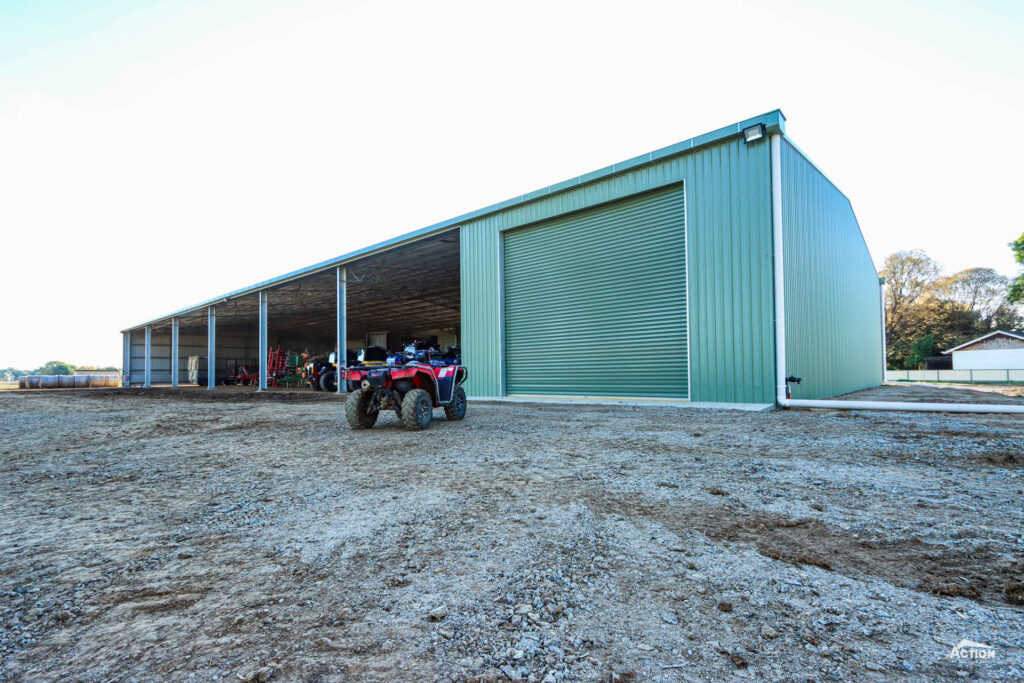
- 18m (W) x 32m (L) x 6m (H) costs approx. $90,000 – $120,000 including GST
- 24m (W) x 42.5m (L) x 7.5m (H) costs approx. $160,000 – $190,000 including GST
- 24m (W) x 48m (L) x 7.5m (H) costs approx. $180,000 – $210,000 including GST
- 24m (W) x 64m (L) x 7.5m (H) costs approx. $230,000 – $270,000 including GST
- 27m (W) x 59.5m (L) x 7.5m (H) costs approx. $245,000 – $285,000 including GST
- 27m (W) x 72m (L) x 7.5m (H) costs approx. $295,000 – $335,000 including GST
Here are some additional price articles that might be relevant to your project:
Col’s Classic Open Bay Shed
Learn all about the textbook open bay shed built for Col Gilby.
Ben’s Machinery Shed With Drive-Through Bays
Watch and listen to Ben Seamer explain how he tweaked the shed design to work for their project.
Jarrod’s Open Bay Hay Sheds
Jarrod doesn’t just have one open bay shed – he has five! Watch the video to learn about his experience building sheds with Action.
That’s a wrap on open bay sheds! We hope this has been a helpful discussion for you.
Listed below are some other articles and resources that may be helpful:
- Open Web Truss Vs UB Rafter
- Can I Retrofit My Shed For Storing Grain?
- 2025 Machinery Shed Guide (PDF Download)
Ready to build your shed? Speak with one of our building consultants on 1800 687 888 – we would love to help you!
